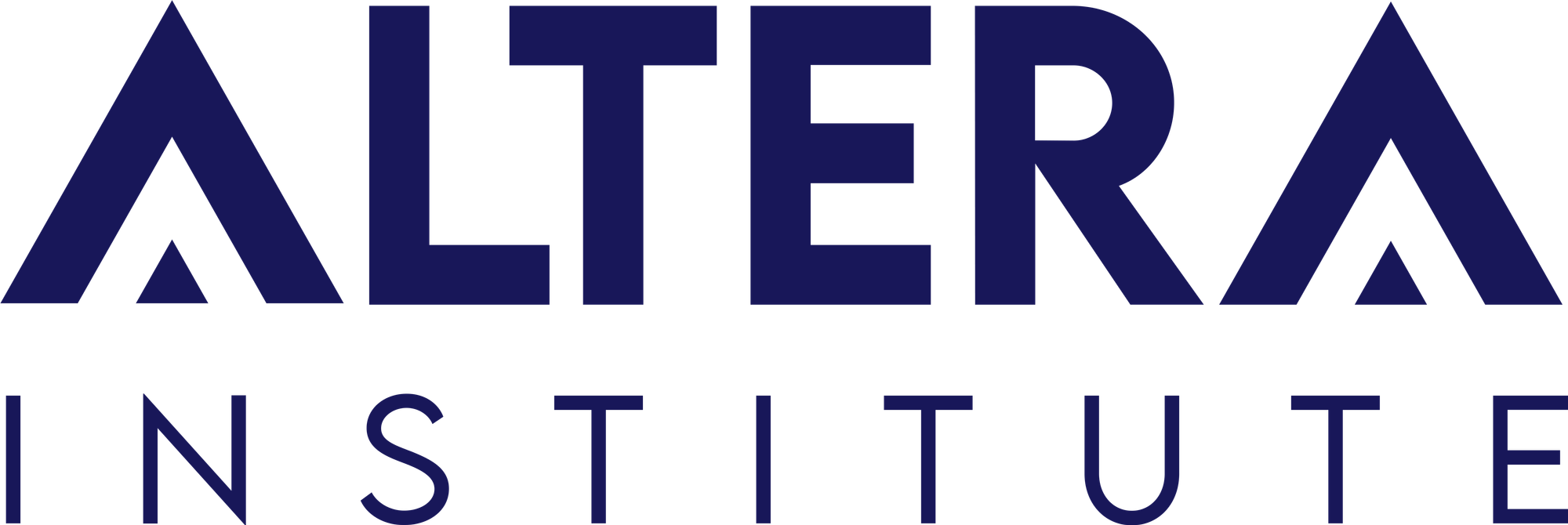MBA is for How Many Years?

Understanding the time commitment for a Master of Business Administration (MBA) degree is an essential category for aspiring students to plan their careers, finances, and personal lives. MBA programs can vary in duration for different types of programs and institutes in the country. The duration to finish an MBA can range from a single year to five years, depending on the program.
In this article, we explore the various factors that determine how long an MBA takes, explain key program structures, and offer guidance on making the best choice based on your goals.
What is an MBA Degree?
An MBA is a post-graduate level qualification focused on developing expertise in business leadership and management strategies. It covers core management knowledge in areas like finance, marketing, accounting, operations, human resources, and supply chain management. First offered by Harvard University in 1908, the MBA has become the most widely accepted graduate management credential worldwide.
The core features of an MBA degree include:
- Course Focus: Business management, decision making, leadership principles, and practical case studies.
- Learning Methods: Lectures, group discussions, business simulations, internships, and capstone projects.
- Specializations: Typical areas include human resources, marketing, finance, operations, information technology, entrepreneurship, international business, and business analytics.
- Delivery Modes: Full-time, part-time, online, executive, and integrated five-year undergraduate plus postgraduate programs.
Employers value MBA graduates for their broad business expertise, refined soft skills, and proven ability to tackle real-world challenges. Notable alumni of top B-schools go on to become industry leaders like CEOs of Fortune 500 companies, successful entrepreneurs, influential consultants, and thought leaders shaping the future of global business.
What are the Objectives of an MBA?
An MBA program is designed to achieve four overarching objectives, each with specific learning outcomes that prepare graduates for leadership and innovation in business.

1) Mastery of Core Business Functions
An MBA provides deep knowledge of the main functional areas of an organization. Graduates gain understanding of:
- Accounting: Understanding the principles of financial reporting, cost analysis, and decision making.
- Marketing: Utilizing frameworks and methodologies to generate value, target specific demographics, and craft impactful campaigns.
- Finance: Analyzing financial statements, valuing projects, and managing risk in investment decisions.
- Management: Designing organizational structures, leading teams, and optimizing processes.
- Business Information Systems: Leveraging data, information technology, and systems thinking to support decision‐making.
- Strategic Management: Formulating long‐term objectives, assessing competitive environments, and implementing corporate strategy.
2) Leadership and Negotiation Proficiency
This involves developing the ability to lead diverse teams and negotiate effectively, which is central to MBA training.
- Negotiation Skills: Reaching mutually beneficial agreements through principled bargaining and creative problem‐solving.
- Cross-Cultural Teamwork: Working seamlessly with team members from varied cultural and occupational environments.
- Presentation Skills: Articulating polished, structured, and compelling speeches tailored to diverse listeners.
- Self‐Assessment and Development: Identifying personal leadership strengths and gaps and creating a plan for continuous growth.
3) Data and Decision-Making Skills
In today’s data-rich environment, decision-making is grounded in rigorous analysis. MBA students are trained to source quality information, apply quantitative and qualitative methods, and communicate insights effectively. Key learning outcomes include:
- Conducting original business research and presenting findings in structured reports.
- Analyzing data in tables, graphs, and statements to identify actionable insights.
- Creating impactful financial summaries and visualizations for business audiences.
4) Global Business Readiness
With business increasingly operating across borders, an MBA program helps students understand international trends, navigate cultural nuances, and adapt strategies across regions. Exposure to global markets through case studies, exchange programs, and diverse classrooms ensures graduates are ready to lead in multinational settings. Key learning outcomes includes:
- Integrating global economic trends into business analysis.
- Demonstrating sensitivity to cultural diversity in decision-making and leadership.
- Collaborating effectively with international teams and projects.
5) Practical, Hands-On Learning
An MBA’s true value lies in how theory meets application. Practical learning ensures students are equipped to solve real-world business problems with confidence and competence. This is achieved through:
- Live Case Studies: Tackle real business challenges from top companies.
- Internships: Apply classroom knowledge in dynamic work environments.
- Capstone Projects: Simulate C-suite decisions using integrated business strategies.
- Industry Collaborations: Learn from guest lectures, corporate mentorship, and consulting assignments.
- Simulations & Labs: Practice decision-making in risk-free, data-driven scenarios.
This experiential approach makes MBA graduates job-ready from day one.
Collectively, these outcomes ensure that MBA alumni are equipped not only with technical expertise but also with the soft skills and strategic vision required to lead and innovate in today’s dynamic business landscape.
What are the Various MBA Categories and their Duration?
Here are the main MBA formats along with their typical duration, delivery mode, and the audience they best serve. Following these, you will also find two closely related management credentials, namely PGDM and PGP, that are considered as equivalent to the traditional MBA in India.
1) Full‑Time MBA
Duration: Two years.
Reason: A two-year structure enables learners to cover core subjects initially before focusing on their preferred MBA specialization later. The summer internship between years provides hands‑on industry experience and networking opportunities, and the full two years give time for reflective projects and campus recruitment cycles.
Delivery: Daily, on‑campus classes, seminars, project work, and internships.
Ideal For: Recent graduates and early-career individuals looking for a full-time, on-campus learning environment.
2) Part‑Time MBA
Duration: Two to four years.
Reason: Part-time MBAs are designed to accommodate employed individuals who can only take one or two courses at a time. Spreading the coursework over more terms lets learners balance job responsibilities with academic requirements and still covers the same core curriculum and electives as full‑time peers.
Delivery: Evening and weekend classes, occasional on‑campus workshops.
Ideal For: Employed individuals who wish to continue working full-time while upgrading their management skills.
3) Online MBA
Duration: One to two years.
Reason: Many online programs replicate the rigorous teaching methods of traditional on-campus MBA programs while giving students acceleration options. One-year programs compress core and elective courses into an intensive schedule for fast-tracking the process or spread the same content across two years for learners who can dedicate the time.
This dual-track structure works for an online MBA because institutes can flexibly release course modules and set completion deadlines that accommodate both pacing preferences.
Delivery: Live virtual lectures, recorded modules, and group projects via online collaboration tools.
Ideal For: Mid‑career or remote learners needing maximum flexibility in their MBA schedule.
4) Executive MBA
Duration: Twelve to eighteen months.
Reason: This twelve‑to‑eighteen-month span of the executive MBA balances depth of content with the busy schedules of executives. By concentrating sessions into weekends or evening classes, participants can apply their learnings immediately at work while completing the program more quickly.
Delivery: Intensive weekend modules or week‑long residencies combined with online coursework.
Ideal For: Experienced professionals with 5-10 years in the field aiming to advance their leadership capabilities.
5) Integrated MBA
Duration: Five years.
Delivery: Combined undergraduate and postgraduate curriculum delivered on campus.
Reason: Integrated MBA combines the three‑year bachelor's degree with the two‑year MBA degree into a comprehensive 5-year course. This continuous model avoids repetition between degrees and builds progressively from foundational undergraduate courses to advanced management topics.
Ideal For: Students who want to directly apply for an MBA program after completing their higher secondary and want a seamless route to a master’s credential.
MBA Alternatives
In recent years, educational institutions have developed specialized, industry-focused alternative credentials that complement traditional MBA programs. These alternatives, commonly designated as Post Graduate Diploma in Management (PGDM) and Postgraduate Program in Management (PGP), offer targeted expertise tailored to specific sectors and professional requirements.
These programs address the growing demand for specialized management education that aligns closely with industry needs, providing professionals with focused skill sets that traditional MBA curricula may not cover comprehensively.
1) Post Graduate Diploma in Management (PGDM)
Duration: Two years.
Reason: A two‑year schedule parallels traditional MBAs in credit requirements but offers more frequent curriculum updates. This timeframe supports deep engagement with live projects, industry internships, and leadership workshops while maintaining academic rigor.
Key Features:
- The Curriculum is updated frequently to include emerging topics such as artificial intelligence and digital marketing.
- Has strong corporate partnerships for real‑world case studies and mentorship.
- Accredited by AICTE and deemed on par with an MBA by India’s Association of Indian Universities (AIU).
Ideal For: Those who want a management qualification with rapid curriculum refresh and direct industry relevance.
2) Postgraduate Program in Management (PGP)
Duration: One to two years, depending on the institute.
Delivery: Focused on specialized, in‑depth training in a chosen domain with industry mentorship.
Reason: PGPs focus intensively on a chosen domain from the start. A one‑year format delivers distilled core and specialized content rapidly, while a two‑year option allows for deeper project work and mentorship. The shorter span reflects the program’s narrow focus compared to a broad full-time MBA.
Key Features:
- Domain‑specific syllabus from day one, rather than broad subjects, culminated into an elective structure.
- Instructors and advisors frequently consist of seasoned practitioners with extensive domain expertise.
- Students gain a certificate or diploma that commands respect in specialized job markets.
Ideal For: Working professionals seeking targeted skill development in high‑demand fields without the need for a full university degree.
Each format has its own advantages. Your choice should reflect how quickly you wish to graduate, whether you need to continue working, and which mode of delivery best fits your lifestyle. PGDM and PGP provides two robust alternatives if you prefer industry‑aligned or highly specialized programs.
What are the Eligibility Requirements for an MBA?
Most leading business schools require applicants to meet four fundamental criteria before offering admission to an MBA program. While exact thresholds can vary by institution, the core eligibility requirements include:
1) Academic Credentials
- Bachelor’s Degree: Completion of a three to four‑year undergraduate program (10+2+3 or 10+2+4) from a recognized university or college.
- Minimum Grade Point: A cumulative score of at least 50 percent in your bachelor’s studies is required. Candidates from reserved categories often have a lower minimum grade point requirement.
2) Work Experience (When required)
- Full-time MBA: Fresh graduates may enroll directly into most two‑year MBA programs without prior professional history.
- Executive or Part‑Time MBA: Such programs ask for at least two to three years of full‑time work experience, because they are exclusively designed for working professionals.
3) Entrance Examination Score
A competitive result on at least one nationally or internationally recognized entrance test is required. Common options include:
- The Common Admission Test (CAT) exam, conducted by IIMs, serves as a gateway for admission into more than 1200 management institutes across India.
- Xavier Aptitude Test (XAT), conducted by XLRI and its partner institutions.
- NMAT by GMAC, which offers multiple testing windows.
- Symbiosis National Aptitude Test (SNAP), required for Symbiosis University MBA programs.
- The Graduate Management Admission Test (GMAT) is mandatory for numerous international and top-tier Indian business schools.
- Common Management Admission Test (CMAT), administered by the National Testing Agency and accepted by AICTE-approved colleges.
4) Selection Rounds
After clearing the entrance exam stage, candidates usually proceed through:
- Group discussion to assess teamwork and persuasive communication.
- Written ability test to evaluate critical thinking and structured writing.
- Personal interview to explore career goals, motivations, and cultural fit.
Admissions committees often review additional factors such as gender balance, academic specialization, and extracurricular achievements to build a diverse and dynamic MBA cohort.
How to Choose the Right MBA College?
Choosing the right MBA institution plays a decisive role in defining your professional journey and self-development. To make an informed decision, focus on these core factors:

- Define Your Management Goals: Clarify why you want an MBA. Are you aiming to launch a startup, move into consulting, or specialize in human resources? Your objectives will guide you toward schools with strengths in your target area and the format that fits your career stage.
- Prioritize Key Criteria: List what matters to you the most, like placement record, campus culture, facilities, or a balance of academic and extracurricular activities. Consult peers, alumni, and online forums to understand how each college performs against your must‑have list.
- Check Rankings and Accreditation: Examine reputable lists like NIRF (MoE), Business Today, The Week, and Outlook. Confirm accreditations from bodies like AACSB or AICTE and look for international university partnerships.
- Evaluate Alumni Network and Industry Links: A robust alumni community can open doors to mentorship and job opportunities. Examine how college partnerships facilitate internships, industrial tours, and live projects. Strong corporate linkages often translate to smoother campus recruitment.
- Assess Return on Investment: Compare total fees with average starting salaries to estimate how quickly you can recover your investment. If entrepreneurship is your goal, weigh curriculum relevance more heavily than placement statistics.
- Review Faculty and Curriculum: Ensure the faculty includes experienced mentors who offer career guidance. Check that the curriculum is updated regularly to reflect evolving industry needs and that specializations align with your interests.
- Consider Location and Infrastructure: Choose a campus within a manageable distance or with quality on-campus housing. Cutting-edge academic infrastructure, including tech-enabled classrooms, research labs, libraries, and leisure zones, enhances the educational ecosystem.
By aligning your personal goals with these criteria, you will select an MBA college that best prepares you for leadership and success.
FAQs
Q1. How many years of experience are required for an Executive MBA?
Ans: Most Executive MBA programs expect candidates to have between five and ten years of full‑time work experience, with a significant portion spent in managerial roles. This ensures you bring real‑world context to discussions and can apply strategic insights immediately to your current role.
Q2. MBA in the UK is for how many years?
Ans: A traditional full‑time MBA in the United Kingdom typically lasts one year. Part‑time and modular formats extend to two years, allowing working professionals to balance studies with their careers. Some schools also offer accelerated or flexible online options that vary between one and two years.
Summing Up
Choosing the right MBA path begins with understanding the duration and format that best aligns with your career stage, personal commitments, and learning style. Whether you aim for a one‑year accelerated program or a flexible part‑time track, clarity on timelines helps you plan effectively.
Evaluate each option based on curriculum, delivery mode, and industry connections to ensure your investment yields the skills and network you need. Consider program reputation, placement success, and return on investment alongside your long‑term goals.
With careful research and self‑reflection, you can select an MBA or equivalent credential that accelerates your leadership journey, sharpens your strategic thinking, and positions you for success in the global business arena.





